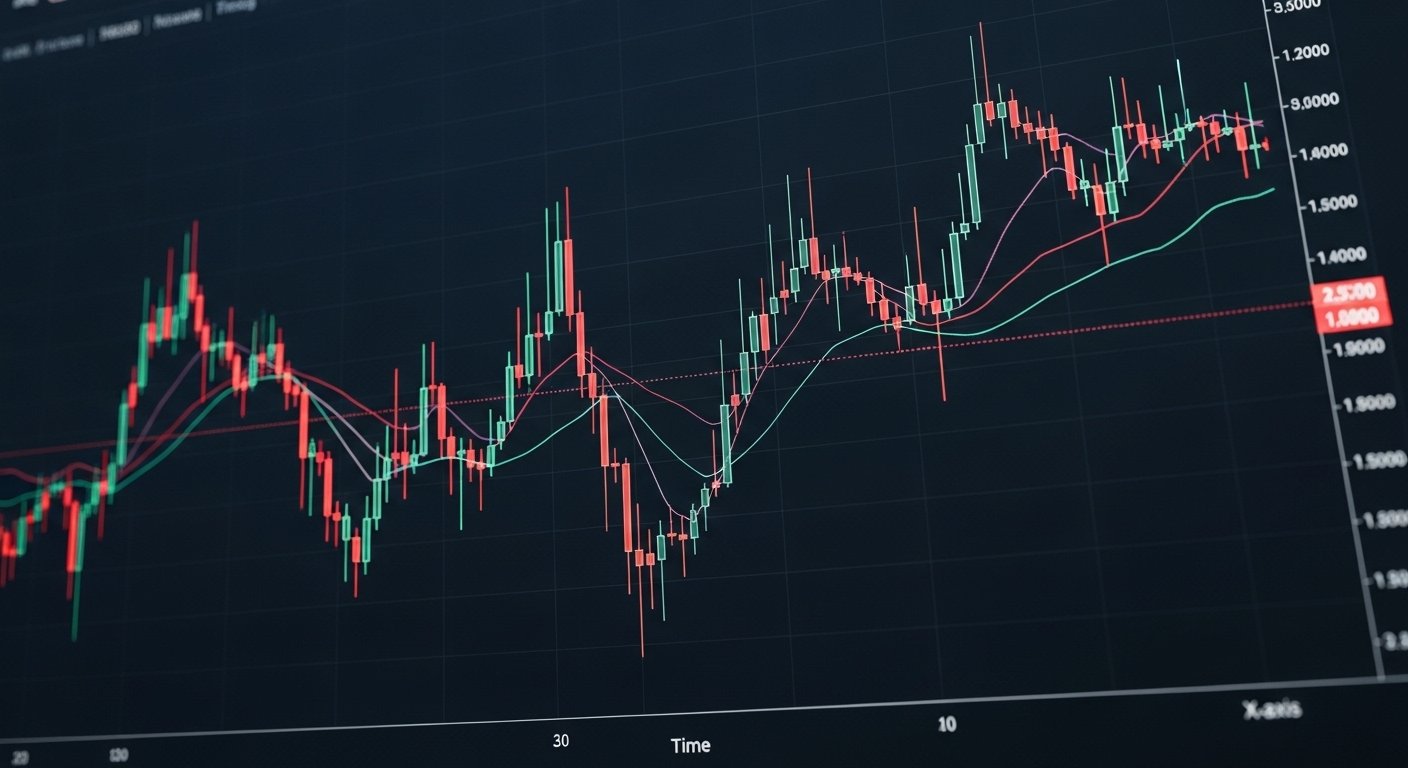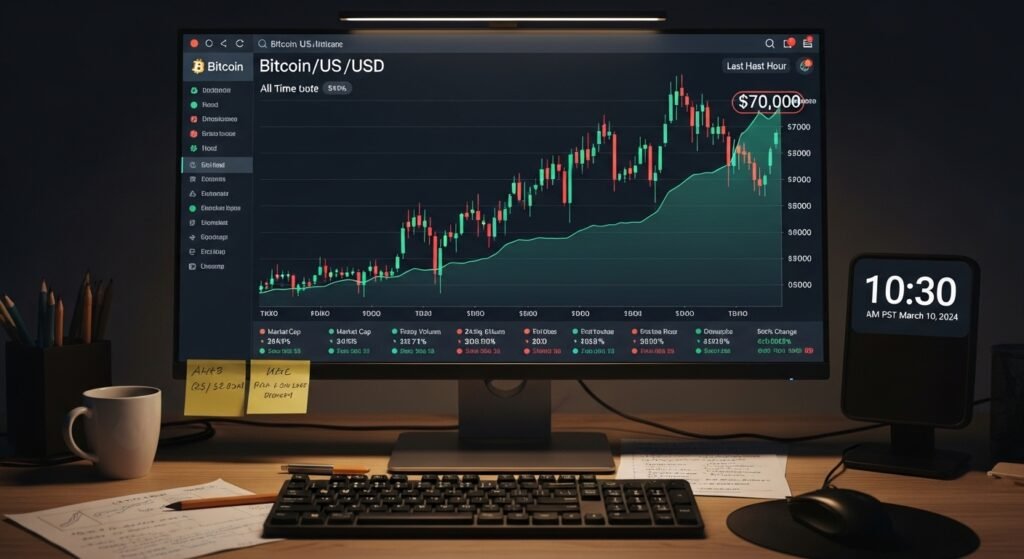The market is on edge again. After a sharp correction that dragged the Bitcoin price down to the $80,000 region, BTC has finally bounced. The latest Bitcoin price watch shows a solid rebound off the $80K support area, and traders everywhere are asking the same question: is this the long-awaited bottom, or just another relief rally in a larger downtrend, a classic bull trap before lower lows?
The move is dramatic not because $80,000 is a small number, but because of how fast Bitcoin got here in the first place. Just months ago, the idea of BTC trading at these levels sounded like a fantasy. A powerful crypto bull run pushed the market to new heights, fueled by institutional inflows, halving narratives and relentless optimism. But as always in crypto, gravity eventually kicked in. Profit-taking, macro headwinds and aggressive leverage flushed price down from euphoric highs to test deeper support zones.
Now that the Bitcoin price has rebounded off $80K, the market sits at a crossroads. Some see a textbook higher low forming above previous cycle peaks, a bullish sign that the correction may be ending. Others argue the bounce is nothing more than a temporary pause in a larger Bitcoin bear phase, warning that traders are walking straight into a trap. In this detailed analysis, we will explore what this rebound really means, how to read the chart, what on-chain and macro factors are saying, and how both bulls and bears are framing the current BTC price action.
The significance of the $80K level in Bitcoin’s cycle
To understand the importance of this rebound, it helps to look at why $80,000 matters at all. Markets are not just moved by numbers; they are moved by meaning. The $80K level sits in a psychologically important zone. It is well above previous all-time highs from earlier cycles, yet comfortably below the euphoric peaks printed at the top of this one.
In many Bitcoin price cycles, a key test of strength comes when BTC pulls back to retest an area that was once considered unthinkable. If that zone holds as support, it suggests a structural shift: what used to be expensive becomes the new normal. In that sense, $80K Bitcoin acting as a floor rather than a ceiling would mark a powerful statement about long-term adoption and value perception.
At the same time, large round numbers become magnets for liquidity. Traders set stop-losses, take-profit targets and limit orders around such levels. When price approaches a huge figure like $80,000, the market often responds with sharp reactions. That is exactly what we saw as Bitcoin price bounced off $80K, creating a visible wick on higher time-frame charts and sparking a wave of renewed speculation.
Technical perspective: structure, support and resistance
From a technical analysis perspective, the current Bitcoin price watch is all about structure. After putting in a high and rolling over, BTC carved out a series of lower highs on shorter time frames before cascading down into the $80K area. This kind of move is often associated with a correction within a larger uptrend, but it can also be the early phase of a full trend reversal.
The rebound off $80,000 has put the focus on several key technical questions. First, will the bounce create a new higher low on the daily or weekly chart relative to the last major swing point? If so, that pattern may support a bullish argument that the broader trend remains intact. In that scenario, Bitcoin price could consolidate above $80K and start reclaiming broken resistance levels one by one.

Second, traders are watching what happens as BTC approaches the first serious resistance levels above the bounce. These may include broken support zones, moving averages and previous consolidation areas that now act as barriers. If Bitcoin fails to break back above those regions and instead prints a lower high, the rebound could be interpreted as a classic bull trap, drawing in optimistic buyers before the next leg down.
Technical indicators like the relative strength index, moving averages and volume profiles add nuance but do not remove the uncertainty. They can hint at exhaustion or hidden strength, yet the central question remains: is this bounce forming the right side of a bottoming pattern, or just part of a wider distribution phase at the top of the cycle?
Is $80K a cyclical bottom or just a bull trap?
This is the core dilemma in every Bitcoin price watch update following a big bounce. When the market rebounds sharply from an important level, it is tempting to call the bottom immediately. The emotional desire for certainty is strong, especially after a painful drop. But the market rarely offers such clarity in real time.
A genuine bottom often has certain characteristics. Volatility remains high, but each dip is met with increasingly strong buying interest. Volume starts to build on up days rather than down days. Long-term support zones on higher time frames are tested and respected. Sentiment shifts from panic to cautious curiosity as traders realize the worst may be over. In that environment, a rebound off $80K could indeed signal that the Bitcoin downtrend is losing momentum.
A bull trap, on the other hand, tends to develop when there is still a lot of overhead supply from traders who bought higher and are eager to exit on any strength. The bounce looks impressive at first, but it fails to break through key resistance levels. As price stalls and starts to roll over, those trapped buyers sell into the rally, creating fresh downward pressure. In that case, the rebound off $80,000 is not the start of a new uptrend, but a temporary illusion that leaves late buyers exposed. Right now, both scenarios remain on the table. That is why experienced traders focus less on predicting the label—bottom or trap—and more on mapping key levels and planning how to respond as price reveals more information.
On-chain clues: what smart money and holders are doing
Beyond the chart, on-chain data can provide valuable hints about whether the Bitcoin price rebound is being supported by strong hands or driven mainly by short-term speculation. Metrics such as exchange inflows, realized profits and losses, and long-term holder behavior help paint a more complete picture of market health. When Bitcoin truly bottoms, you often see long-term holders quietly accumulating, even as headlines remain pessimistic.
Coins move from exchanges into cold storage, reducing the available supply available for immediate sale. This pattern of accumulation can create a foundation for a more sustainable uptrend. If the recent bounce off $80K coincides with increased accumulation by long-term wallets and declining exchange balances, it strengthens the case for a genuine bottom. In contrast, if on-chain data shows a surge in coins moving back onto exchanges during the rally, that may signal that holders are using the bounce to exit positions.
A spike in realized profits at resistance levels can suggest that the rebound is being sold into rather than embraced as the start of a new leg higher. In that case, the Bitcoin price watch would tilt more toward the “trap” interpretation, warning that another wave of selling pressure may arrive once early buyers are done exiting. On-chain data never gives absolute certainty, but it does reveal where the conviction lies. A strong base of patient, long-term investors buying near $80,000 looks very different from nervous holders rushing to sell into every uptick.
Macro environment: risk sentiment and liquidity
Even the best Bitcoin chart does not exist in isolation. The broader macro environment plays a key role in whether a rebound off $80K can evolve into a sustainable trend. Risk assets like cryptocurrencies are closely tied to liquidity conditions, interest-rate expectations and overall market sentiment.
If global markets are shifting back into risk-on mode—perhaps because central banks are hinting at rate cuts, inflation data is softening, or recession fears are easing—then a strong backdrop may support a Bitcoin price recovery. In such a case, capital often rotates back into higher beta assets, and BTC can benefit from renewed institutional flows and fresh speculative interest.
If, however, the macro narrative remains bearish or uncertain, the $80K rebound could face a tougher path. Persistently high rates, renewed inflation worries or geopolitical shocks can all drain enthusiasm for risky trades. Under those conditions, rallies may be short-lived as investors seize every opportunity to de-risk portfolios. For Bitcoin, that means each attempt to climb away from $80,000 may be met with selling from macro-sensitive players.
Monitoring equities, bond yields, the dollar index and overall risk appetite can therefore add helpful context to any Bitcoin price watch analysis. A bottom in BTC is far more convincing when it lines up with improving conditions across other risk assets, not just a standalone bounce.
Altcoins and the broader crypto market reaction
Another important signal comes from how altcoins react to the Bitcoin rebound. In strong crypto bull markets, altcoins often follow BTC higher and then eventually outperform as traders move further out on the risk curve. When Bitcoin bounces off a deep support zone and altcoins respond with renewed strength, it can suggest that risk appetite is returning across the board.
However, if Bitcoin price recovers from $80K while altcoins remain flat, weak or aggressively sold on every uptick, the message is different. That kind of divergence may indicate lingering caution. Traders might be willing to hold or slowly accumulate BTC, but not yet ready to re-enter smaller, more speculative tokens.

Such behavior often appears when the market is in a transition stage between bull and bear. Bitcoin acts as the relative safe haven of the crypto universe, while altcoins lag until confidence returns. Observing those relationships helps answer whether the current move is a broad-based market recovery or simply a defensive bounce concentrated in the most established asset.
Trading around a possible bottom: risk management over prediction
For traders and investors, the real challenge is not labeling the move, but acting wisely in the face of uncertainty. A Bitcoin price watch focused on the $80K rebound should highlight risk management, not blind conviction. Short-term traders might approach the bounce with structured plans. They can define clear invalidation levels below $80,000, set realistic upside targets at nearby resistance zones and remain open to both bullish and bearish scenarios. The goal is to let the market confirm strength before betting heavily on a sustained uptrend.
Longer-term participants may take a different approach. For them, the question is not whether $80K is the exact bottom, but whether current levels make sense within a multi-year thesis. If they believe in the long-term trajectory of Bitcoin and are comfortable with volatility, they may use the rebound as a signal to start accumulating gradually, knowing that perfect entries are rare. In both cases, the key is humility. The market does not owe anyone a clear answer about whether this is truly the bottom or just a trap. By focusing on position sizing, time horizon and contingency plans, traders can navigate the uncertainty without being crushed by a wrong guess.
Lessons from past Bitcoin bottoms and fakeouts
History does not repeat perfectly, but it often rhymes. Looking back at previous Bitcoin cycles, we see that real bottoms and fake bottoms both left clues—but those clues only looked obvious in hindsight. True bottoms often came after extended periods of pain, where sentiment had shifted from denial to despair. Price had flushed weak hands out, leverage had been largely cleared and the market appeared numb to negative news. In those moments, rebounds from major support zones slowly evolved into new trends, supported by rising volume and improving on-chain metrics.
Fake bottoms, in contrast, tended to appear earlier in the correction. The emotional tone was less despairing and more hopeful. Traders were eager to believe the worst was over. Bounces were sharp but shallow, failing to reclaim critical levels. Eventually, these rallies rolled over, leading to deeper lows and a more prolonged winter.
The current Bitcoin price watch around the $80K rebound inevitably invites comparison to both categories. Until time passes and more data emerges, no one can be sure which template it will follow. Still, the lessons from the past encourage caution, patience and a willingness to adjust as the pattern unfolds.
Conclusion
The rebound off the $80,000 level has turned the spotlight back onto Bitcoin price watch discussions everywhere. On one side stand the optimists, arguing that a successful defense of $80K signals a strong floor in a maturing cycle. On the other side are the skeptics, warning that this bounce may be a textbook bull trap designed to lure in hopeful buyers before the next leg down.
Technical structure, on-chain data, macro sentiment and altcoin behavior all offer important pieces of the puzzle, but none provide a crystal-clear answer. What is certain is that $80,000 has become a key battleground in the ongoing tug-of-war between bulls and bears. Whether it marks a lasting bottom or a clever bait will depend on how price behaves in the weeks ahead—particularly around major resistance levels and in response to new macro developments.
For traders and investors, the wisest path is to respect both possibilities. Acknowledge that Bitcoin has shown resilience by rebounding off a critical support zone, but also recognize that volatile assets can produce multiple strong rallies inside broader downtrends. By focusing on risk management, flexible thinking and a clear understanding of personal timeframes, participants can navigate this uncertain chapter without being forced into all-or-nothing bets.
In the end, whether $80K proves to be a launching pad or a trap, the current Bitcoin price watch underscores a familiar lesson: in crypto, the journey rarely moves in straight lines, and the market rewards those who stay prepared for both sunshine and storms.
FAQs
Q: Why is the $80K level so important in the current Bitcoin price watch?
The $80K level is important because it combines psychological significance with structural relevance. It sits well above previous cycle highs, making it a potential long-term support if held, and attracts a large amount of liquidity from traders who place stops and orders around such a big round number. The recent rebound off $80K has therefore become a key test of whether Bitcoin price is forming a durable floor or just staging a temporary relief rally.
Q: How can I tell if the rebound off $80K is a real bottom or a bull trap?
There is no way to know with certainty in real time, but there are clues. A real bottom often comes with strong buying interest on dips, rising volume on up days, respect for major support levels and signs of long-term accumulation on-chain. A bull trap usually fails to break through key resistance zones and is accompanied by holders using the bounce to exit. Watching how BTC behaves near important resistance, and tracking on-chain activity, can help you judge which scenario is more likely.
Q: What role does the macro environment play in Bitcoin’s rebound from $80K?
The macro environment is crucial. If interest-rate expectations are easing, liquidity is improving and risk appetite is returning, a rebound off $80K stands a better chance of evolving into a sustained Bitcoin uptrend. If rates remain high, inflation remains stubborn or global markets remain risk-off, the same rebound could struggle, as investors may treat it as an opportunity to reduce exposure rather than add to it.
Q: How are altcoins affected by Bitcoin bouncing off $80K?
Altcoins typically take their cues from Bitcoin. If the Bitcoin price rebound off $80K is viewed positively and risk appetite returns, many altcoins may follow with strong recoveries. However, if sentiment is still cautious, capital could concentrate in BTC while altcoins lag behind. Weak altcoin performance during a Bitcoin bounce can signal that the broader crypto market is not yet ready to embrace full risk-on behavior.
Q: Should I buy Bitcoin now that it has rebounded from $80K?
Whether to buy now depends on your risk tolerance, time horizon and conviction. The rebound off $80K is an important signal, but it does not guarantee that the bottom is in. Short-term traders may prefer to wait for confirmation that BTC can reclaim key resistance levels, while long-term investors might choose to accumulate gradually, accepting that volatility and further downside are still possible. The most important thing is to manage risk carefully and avoid making decisions based solely on a single price level or headline.
Also Read: Bitcoin Falls Under $90K as Trader Caution Intensifies

